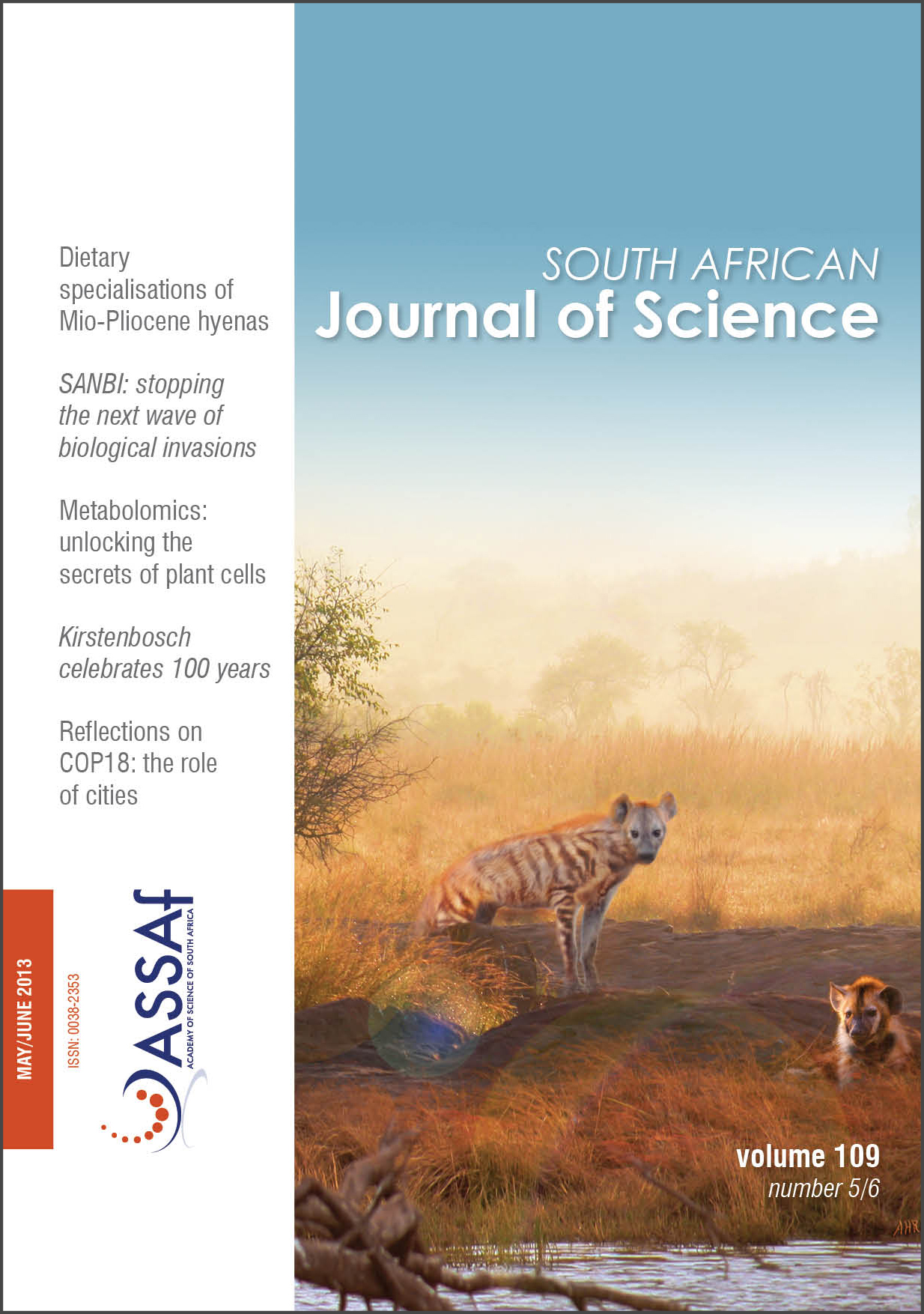Numerical investigation into the existence of limit cycles in two-dimensional predator–prey systems
DOI:
https://doi.org/10.1590/sajs.2013/1143Keywords:
Lotka–Volterra models, predator–prey systems, stable limit cycle, Poincaré mapping, numerical methodAbstract
There has been a surge of interest in developing and analysing models of interacting species in ecosystems, with specific interest in investigating the existence of limit cycles in systems describing the dynamics of these species. The original Lotka–Volterra model does not possess any limit cycles. In recent years this model has been modified to take disturbances into consideration and allow populations to return to their original numbers. By introducing logistic growth and a Holling Type II functional response to the traditional Lotka–Volterra-type models, it has been proven analytically that a unique, stable limit cycle exists. These proofs make use of Dulac functions, Liénard equations and invariant regions, relying on theory developed by Poincaré, Poincaré-Bendixson, Dulac and Liénard, and are generally perceived as difficult. Computer algebra systems are ideally suited to apply numerical methods to confirm or refute the analytical findings with respect to the existence of limit cycles in non-linear systems. In this paper a class of predator–prey models of a Gause type is used as the vehicle to illustrate the use of a simple, yet novel numerical algorithm. This algorithm confirms graphically the existence of at least one limit cycle that has analytically been proven to exist. Furthermore, adapted versions of the proposed algorithm may be applied to dynamic systems where it is difficult, if not impossible, to prove analytically the existence of limit cycles.
Published
Issue
Section
License

All articles are published under a Creative Commons Attribution 4.0 International Licence
Copyright is retained by the authors. Readers are welcome to reproduce, share and adapt the content without permission provided the source is attributed.
Disclaimer: The publisher and editors accept no responsibility for statements made by the authors
How to Cite
- Abstract 295
- PDF 618
- EPUB 174
- XML 193












.png)